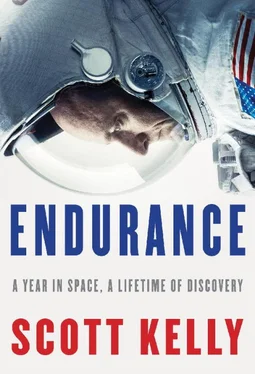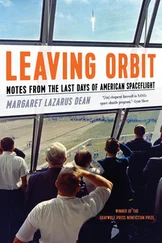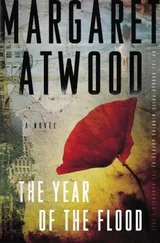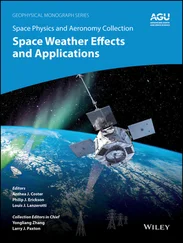—
ON A MONDAY MORNING a couple of weeks later, I prepare to start working on the rodent experiment, designed to study the negative effects of spaceflight on mammal physiology, with the goal of developing ways to prevent them. So much of the damage to our tissues mirrors the effects of aging—muscle wasting, bone loss, cardiovascular weakening; the solutions that come from these studies will have wide-ranging benefits for humanity, not just for space.
I get out the scalpels, hemostats, tweezers, scissors, probes, syringes filled with sedatives to spare the mice pain, and fixatives to preserve the tissues. I set up the glove box, a glass case with gloves built into the front that lets me manipulate what’s in the box without exposing it to the rest of the station. On Earth the glove box wouldn’t be necessary for this kind of work, but in weightlessness it’s worth avoiding having scalpels and all the rest floating around the lab. I’ve already discovered that the habitat isn’t fail-safe, and I have to constantly look out for small brown UFOs while floating through the lab.
The scientists who design the experiments conducted on station try to minimize the time and attention required from astronauts. There are many experiments going on here that I know absolutely nothing about because they will be worked on by other crew members or because they don’t require human involvement at all, humming along on their own either inside or outside ISS for the entire year. There are others that require only that I push a button or load a new sample once in a while. Some will take more of my time, such as this rodent experiment. I will spend all day with the mice, and the work will be precise and demanding. In order to carry it out, I trained with the scientists in charge of the research before my launch, learning the skills of dissection.
Terry takes the first mouse out of its habitat and slips it into a small container to transfer to the glove box. With nothing to hold on to, she does a slow circle in zero g, working her paws uselessly. I’ve been watching the mice float and wriggle, and it seems as though they have adapted quite a bit and are learning how to get around in this new environment with its new laws of physics. Even their physical condition has appeared to improve since they’ve been here. I set up the cameras for a live downlink with the scientists on the ground in Alabama and California who will talk me through my work in real time. I put the mouse against a piece of wire mesh—since they seem to like to have something to hold on to—then grip the loose skin on the back of her neck, the way you’d scruff a cat, hold the tail between my pinky and ring finger, and slip the needle and syringe full of sedative into her belly.
Once the drug takes effect, Terry puts the mouse into a small X-ray machine. Next I slice into her abdomen, exposing her organs, then insert a syringe into her heart and draw blood into a tiny tube, not unlike the blood I take from myself for the human research studies, except that this step euthanizes the mouse. I put the tube into a bag and label it carefully. Next I remove the mouse’s left eye, following instructions from the ground. That goes into a container and gets labeled. Then I remove her hind legs. This set of experiments is specifically designed to learn about eye damage, bone loss, and muscle wasting. It’s not lost on me that all of the biological processes affecting this mouse are also affecting my own body.
Early in my career as an astronaut I was skeptical of whether I wanted to fly on the International Space Station: most of what station astronauts do is science. After all, I’m a pilot. The goal that had driven me to become an astronaut was to fly more and more challenging aircraft until I got to the hardest thing there was to fly: the space shuttle. Dissecting a mouse is a far cry from landing a space shuttle—but then again, so is unpacking cargo, repairing an air conditioner, or learning to speak Russian, and I do those things too. I’ve come to appreciate that this job has challenged me to do not just one hard thing, but many hard things.
—
MORE THAN four hundred experiments will take place on ISS during this expedition, designed by scientists from many countries and representing many fields of study. Most of the experiments in one way or another study the effects of gravity. Pretty much everything we know about the world around us is influenced by gravity, but when you can remove that element from the subject of an experiment—whether it’s a mouse, a lettuce plant, a fluid, or a flame—you have unlocked a whole new variable. This is why the science taking place on station is so far ranging; there are few branches of science that can’t benefit from learning more about how gravity affects their subjects.
NASA scientists talk about the research taking place on station as falling into two large categories. The first comprises studies that might benefit life on Earth. These include research on the properties of chemicals that could be used in new drugs, combustion studies that are unlocking new ways to get more efficiency out of the fuel we burn, and the development of new materials. The second large category has to do with solving problems for future space exploration: testing new life support equipment, solving technical problems of spaceflight, studying new ways of handling the demands of the human body in space. All the experiments of which I am the main subject fall into this second category: the study comparing Mark and me as twins over the course of the year; the study on the effects of a year in space on Misha and me; the work being done on my eyes and heart and blood vessels. My sleep is being studied, as is my nutrition. My DNA will be analyzed to better understand the effects of spaceflight at a genetic level. Some of the studies being conducted on me are psychological and social: What are the effects of long-term isolation and confinement?
Science takes up about a third of my time, human studies about three-quarters of that. I must take blood samples from myself and my crewmates for analysis back on Earth, and I keep a log of everything from what I eat to my mood. I test my reaction skills at various points throughout the day. I take ultrasounds of blood vessels, my heart, my eyes, and my muscles. Later in this mission, I will take part in an experiment called Fluid Shifts, using a device that sucks the blood down to the lower half of my body, where gravity normally keeps it. This will test a leading theory about why spaceflight causes damage to some astronauts’ vision.
In fact, there is much crossover between these categories of research. If we can learn how to counteract the devastating impact of bone loss in microgravity, the solutions may well be applied to osteoporosis and other bone diseases. If we can learn how to keep our hearts healthy in space, that knowledge will be useful for heart health on Earth. The effects of living in space look a lot like those of aging, which affect us all. The lettuce we will grow later in the year is a study for future space travel—astronauts on their way to Mars will have no fresh food but what they can grow—but it is also teaching us more about growing food efficiently on Earth. The closed water system developed for the ISS, where we process our urine into clean water, is crucial for getting to Mars, but it also has promising implications for treating water on Earth, especially in places where clean water is scarce. This overlapping of scientific goals isn’t new—when Captain Cook traveled the Pacific it was for the purpose of exploration, but the scientists traveling with him picked up plants along the way and revolutionized the field of botany. Was the purpose of Cook’s expedition scientific or exploratory? Does it matter, ultimately? It will be remembered for both, and I hope the same is true of my time on the space station.
Читать дальше












